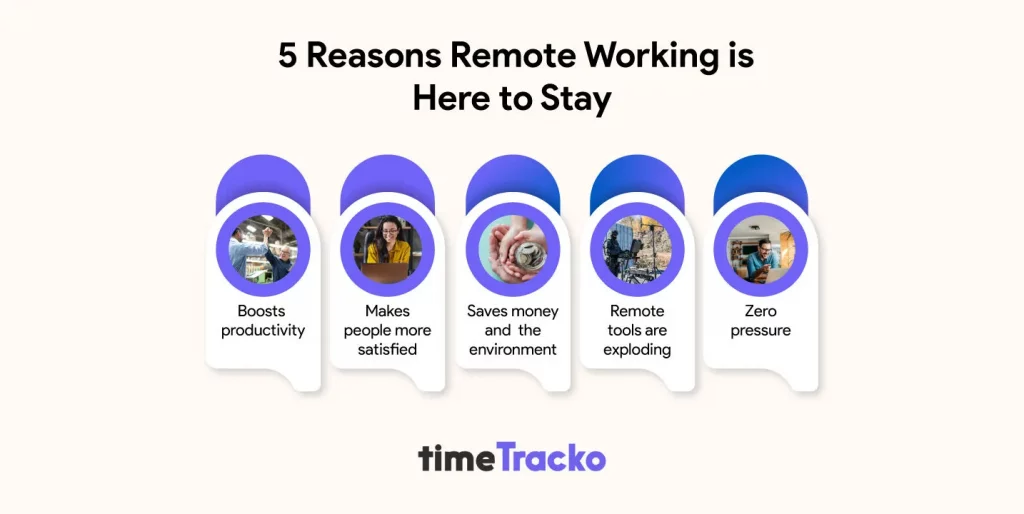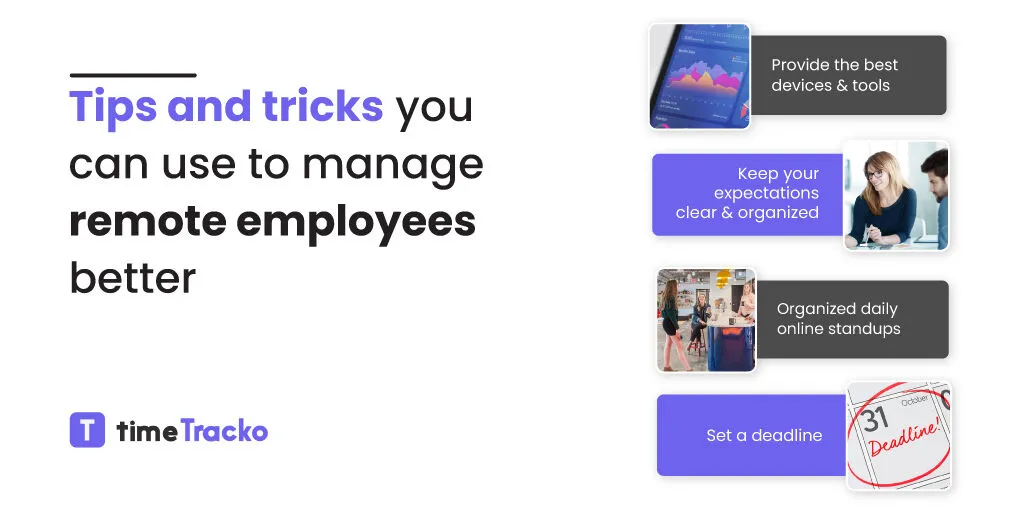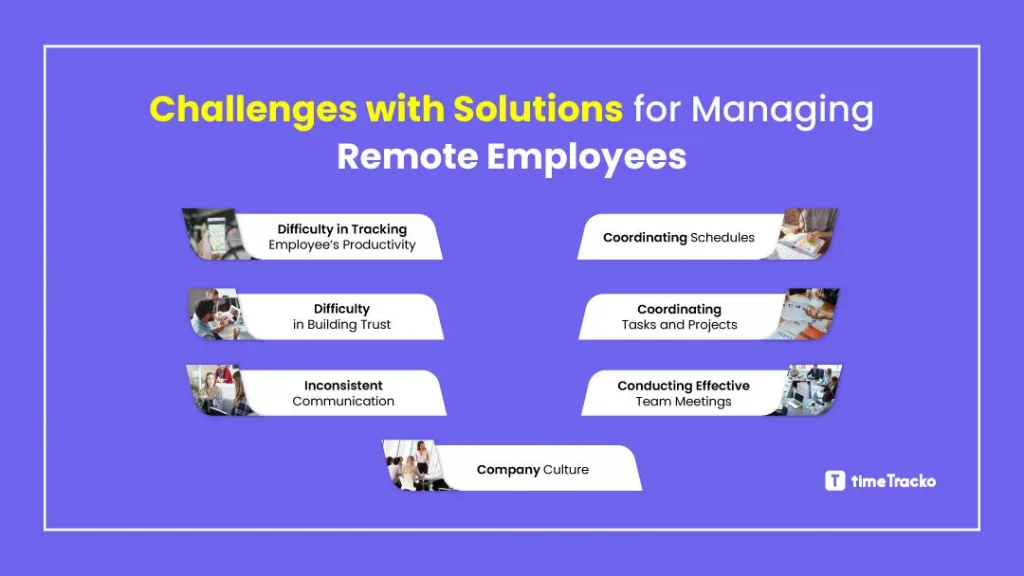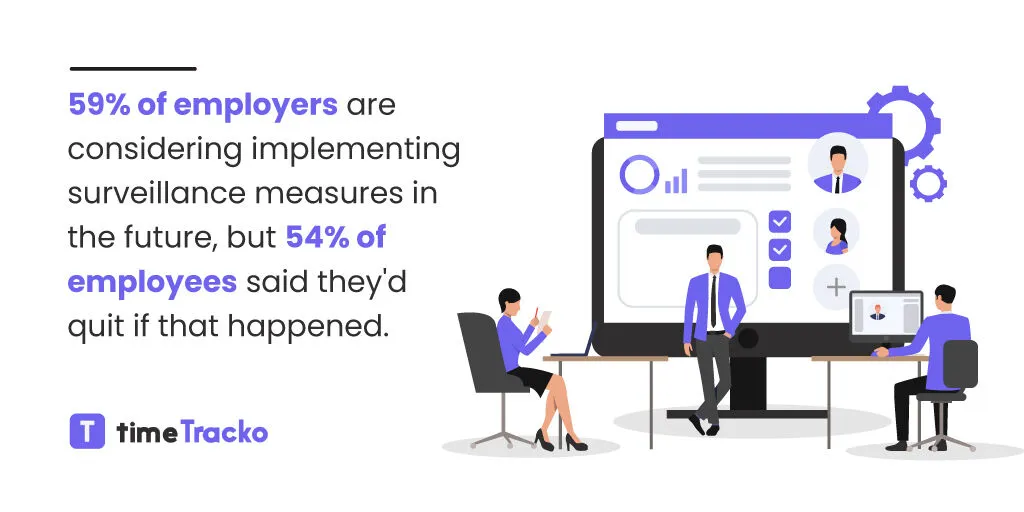7 Challenges With Solutions for Managing Remote Employees
7 Challenges With Solutions for Managing Remote Employees
Professionals all over the world have always been accustomed to doing remote work. The opportunity to work remotely was something many people wanted. They say if they get a chance to work from work, they won’t let it go.
As per Buffer’s state of remote work report, 99% of employees responded that they were interested in working remotely.
In the past (before 2019), working from home was a movement. Even though working from home was not a global new topic, it got attention only after the first pandemic (COVID-19) broke out.

Within three months, several million workers had to set up home offices. The word “Zoom” became commonplace. Remote events and parties became the norm. There was an unprecedented increase in employees working from home in the first quarter of 2020. And remote employee management challenges also increased along with it.
The Remote Working trend is increasing daily from small corporations to large business enterprises globally. Despite its many benefits, working remotely is mostly an individual decision.
No commute, setting your own schedule, and a better work-life balance are all great advantages. However, managers must make sure the work gets done while accommodating all of these perks.
The situation for managers suddenly deteriorated. The management of employees remotely became more challenging. In the midst of the pandemic, everyone was put to the test, from budding managers to seasoned executives.

No wonder managers have to deal with a lot of challenges when transitioning from an office to a virtual office. This article discusses the top most challenges that a manager is likely to have to deal with.
7 Common Challenges of Managing Remote Employee

Difficulty in tracking employee’s productivity
Perhaps you wonder, as a remote team manager, how do I know if my team members are getting things done or using their time well. You will have far less insight into the process of work if you’re not able to see your team in person.
You recognize you need to establish trust with your team. You don’t want to micromanage them, but you still require some means of tracking their productivity. Having a tracking system in place, like the best PC monitoring software, isn’t just for your peace of mind. At Rocket Moving Services, we’ve faced similar challenges with remote coordination and ensuring our teams are on track without micromanaging. For us, the key was integrating a tracking system that not only logs hours but also tracks the status of each move, including inventory checks, packing progress, and customer communications. This helped improve our operational efficiency by 25% and gave us a clear view of progress at every job site, without the need for constant check-ins,” says Christopher Vardanyan, co-founder of Rocket Moving Services.

If there are some obstacles in the workflow, you can easily track them using a tracking system and solve them. The obstacles can be of any form. They can be: one employee is working too much while another is underutilized, overtime issue, or employee’s burnout.
Solution for difficulty in tracking employee’s productivity
Using tracking system:
Tracking software i.e timeTracko helps you
- To measure your team’s productivity, work on your project,
- All-in-one time tracking and productivity application,
- Can easily monitor their clock in, clock out, break time, idle time,
- Monitor how much time employees spend on specific projects or other apps to stay productive.
- Sends the screenshot of the applications, pages, and websites you are using,
- The manager can monitor the time you spend on several works,
- Helps to keep a record of your productive and unproductive hours.
Learn more:- Best Time Management Apps to Keep You Productive
Difficulty in Building Trust

As a manager, when you are at work, you can see your employees and keep an eye on them. Trust increases when you have face-to-face interaction with employees. According to a 92-question survey, Remote managers reported that they lacked trust in employees working from home. The study found that monitoring and supervising the work of remote employees was one of the major challenges in managing them.
There are many reasons for trust issues to arise:
- Relationships lacking strength
- Inability to have in-depth interactions
- Inability to communicate nonverbally
- Less frequent interactions
- In virtual teams, time, distance, organization, and culture can cause disruptions and differences.
Recruiting remote employees without evaluating them is also challenging. Therefore, it would be helpful if you recognized the employees as soon as possible by tracking their productivity.
Solutions of Difficulty in Building Trust
- The leaders, looking at the top, should model trustworthiness, and hopefully, the managers will follow suit, with the trust extending to employees as well.
- Invest in employees’ autonomy, accountability, and transparency. Empower them to take responsibility for their actions.
- Instead of this extreme version, managers can use the results provided by employees to gauge performance.
Inconsistent Communication

Working with remote teams is all about communication. All members need to be involved, and it’s important to know what they’re working on. Open communication is hard to foster when teams work remotely. Email marketing has traditionally been seen as a formal tool; however, it doesn’t enable quick conversations.
Having clear, effective communication can be difficult for remote teams, which is made more difficult due to physical distance. In contrast, face-to-face meetings are crystal clear, but Slack messages, just like emails, can be missed very easily.
Solutions for Inconsistent communication
- To keep your team on the same page, you’ll need to use multiple communication channels. Instant chat, video conferencing, whiteboards, and email are all tools that can be extremely useful as a manager.
- To minimize the risk of digital miscommunication, be careful of your tone in emails and messages.
- Video meetings with one person offer an exceptionally clear channel of communication and feedback as compared to large groups.
Learn more:- Best Employee Communication Tools for Organization🏢
Coordinating Schedules
When working with independent contractors with inconsistent schedules, it can be challenging for global teams to stay on top of time zones. Managers may face challenges in conducting meetings, training, and other collective activities for a global workforce.
It’s unrealistic to assume that professionals will attend meetings at dawn simply because that time is convenient for you. You cannot ping another team member with a “quick question” at late hours and expect to get quick response: if it’s late at night in their time zone, you cannot expect them to be responsive.
If you know where your employee is and when their general schedules are, you can find a suitable time.
Solutions for coordinating schedules
- Ensure you create and update helpful resources on a regular basis. If your global team relies on you for brief, simple instructions, and if something arises while you are away, they could be stuck until you respond.
- Make sure workers have access to rich and comprehensive resources so they can find answers to their common questions.
- Make full utilization of team collaboration tools
- Record meetings so workers can view them later if they are unable to attend as teleconferences and video conferences can be recorded since they are done over the phone or via video conferencing.
Learn more:- Best Ways To Manage Remote Employee Productivity
Coordinating Tasks and Projects
Coordinating tasks and projects with different schedules, time zones, and workloads can be challenging. As long as you don’t have a system for coordinating tasks and projects, you will have a difficult time meeting client needs.
For assigning the task to an employee of what aspect of the project they need to do and making them understand their role in achieving the common goal, project managers play a key role in this.
Solutions for coordinating tasks and projects among remote employees
- Explicitly explaining goals and scope halfway through a project can hinder productivity. As a manager, ensure team members are involved from the start.
- Set up virtual meetings among employees and specify what the team should do, the goal, the scope, and the timeline.
- Support the team whenever necessary and stay in touch. Communication about project progress will be made easier with instant messaging, but video conferencing tools, such as Zoom and Google Meet, can eliminate confusion.
Conducting Effective Team Meetings
When everyone has different schedules, using the entire remote team for a meeting can be challenging. The meeting must be as productive as possible whenever you are able to gather all the members of the group.
Keep an agenda in mind when you conduct meetings with your teams. Agendas help make meetings more productive. Further, the team can prepare questions ahead of time, because they know what the meeting’s purpose will be before the meeting begins.
Another factor that may hinder conducting effective team meetings is a poor internet connection. There are still parts of the world with poor internet connections. Power outages, connection instability, and weak signals impede communication with remote employees, reducing productivity.
Also, meetings can sometimes be ruined by the environment you’re in or the third person around you too.
For instance, look at this video of how each of the employees had to face embarrassing moments in front of all colleagues while having a meeting.
Solutions for conducting effective team meetings
- You need to carefully cover all the necessary items when planning a remote meeting.
- Making an agenda ensures you won’t waste time and attendees will know what to expect.
- Although independent professionals usually have their own tools and software, your team may include some. Ensure that whatever you use is compatible with the tools and software your team uses.
Learn more:- Virtual Team Building Guides for Remote Team 🧑🏠
Company Culture
Establishing an in-person culture can be challenging, and remote work makes it even more challenging. Management must establish remote work policies, training, remote onboarding protocols, and rules of engagement for their employees in order to achieve a strong sense of organizational remote work culture.
To cultivate a company culture is a long process. You need to hire the right employee, foster strong communication, and continue to instill it across the organization. It will take more effort in a remote team to develop a professional company culture or team that’s known for its fun and energy than in an office.
When a company is based in an office, culture is sometimes shaped without much effort on the part of the owner or the manager. But, this is not the case with remote teams.
Solutions for improving company culture
- Offer occasional gifts to employees and provide rewards that motivate them and make them happier and boost productivity.
- Conduct Team collaboration, virtual meetings, virtual games, and other things to create bonding between remote employees.
- Also, Group video calls every weekend to have fun together to feel more connected with colleagues.
- Schedule some programs during the weekend, conducted online with all the team members’ involvement.
Learn more:- Best Ways To Adopt New Work Culture
Wrapping Up
The purpose of this article is to anticipate and resolve common challenges associated with managing remote workers. If you implement the solutions we’ve suggested, your distributed team will be able to maximize its potential.
Managing Remote Employees was not an easy task earlier, but now you can use timeTracko to manage employees better. You, as a manager, have to understand the unique challenges remote employees and companies face and how to solve them effectively.

 in Melbourne
in Melbourne 
 Employee Screen Monitoring Software
Employee Screen Monitoring Software App and Website Monitoring Software
App and Website Monitoring Software Time and Attendance Software
Time and Attendance Software Finance
Finance Banking
Banking Healthcare
Healthcare Lawyers
Lawyers Retail & ecommerce
Retail & ecommerce Knowledge base
Knowledge base Blogs
Blogs Installation Guide
Installation Guide FAQs
FAQs About
About Media Kit
Media Kit Contact us
Contact us